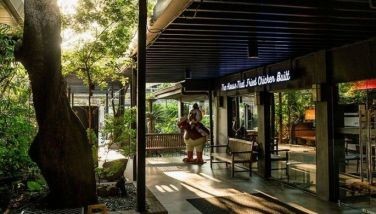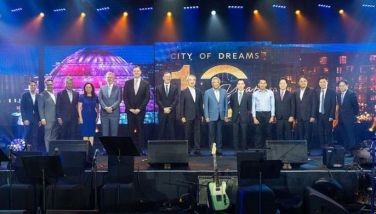Celebrating the Filipino Christmas

Throughout the world, it has become almost a cliché that there is no Christmas like what we have in the Philippines. Other countries may have a Christmas season but only in our country is it a four-month celebration starting in September. During the last few years because of the pandemic, we have been unable to celebrate the traditional Filipino Christmas.
But now, we will again celebrate Christmas as we have done for the last centuries. So what is a Filipino Christmas?
In many countries now, Christmas is not celebrated as a religious occasion but more as a secular holiday. In fact there the usual greeting has shifted from “Merry Christmas” to “Happy Holidays.” The Philippines, however, is overwhelmingly a Christian and deeply spiritual people.
Anthropologists and historians tell us that we were a very spiritual people long before we were Christianized. During the pre-Spanish period, our people already believed in the one God or Bathala and the babaylans who were female priestesses.
Filipino Christmas traditions therefore are very much intertwined with Catholic symbolisms and rituals. One very unique tradition that is being spread around the world by the Filipino diaspora is the Simbang Gabi. It is only in the Philippines when the official Christmas season begins with the nine-day series of masses celebrated at dawn.
One year, I spent Christmas in northern California with my daughter’s family. I noticed that several Catholic parishes were holding these early morning masses and announcing them as a Filipino Christmas tradition. National Artist for Literature Alejandro Roces, writer and cultural historian, wrote that the Simbang Gabi is the tradition that has become Filipinized.
During the early Spanish colonial period, the Christmas season coincided with the rice harvest season when farmers would go to the fields at the crack of dawn to harvest their crops. In order to accommodate these farmers, Novena Masses were celebrated at four in the morning. This has become such a part of a Filipino Christmas that today, even in urban centers like Metro Manila and foreign cities where there are Filipino communities, this practice continues even though there are no farmers.
Among the rich Filipinos, the symbolic décor is the Christmas tree, which is actually supposed to be a pine tree. Many times, they even have fake snow and figures of Santa Claus. These decorations are so alien in a tropical country like the Philippines.
It is the Christmas lantern or parol that is so Filipino. Today, there are modern versions of the parol but they have remained so reminiscent of Filipino Christmases that Christmas lantern parades are celebrated from Pampanga to San Francisco.
The story is that these lanterns are placed outside people’s homes, no matter how humble, as symbols that St. Joseph and the Blessed Virgin Mary will not have to look for an inn or a stable to give birth to baby Jesus. The parol is also the symbol of the star that the three kings followed to the town of Bethlehem on the night of the birth of Jesus.
It is said that the splendor of the parol reflects the mood of the people and the state of the economy. In one of Rizal’s writings, he described a town: “It was Christmas Eve, but the town was sad. Not one paper lantern hung from the windows.”
Another tradition is the display of the belen, a tableau depicting the Nativity scene. The belen is derived from the Spanish word for Bethlehem. I feel that this is a Filipino cultural tradition which is more appropriate than a Christmas pine tree or one made of other forest products.
The most Filipino among our Christian traditions is the family gathering. Because of our Filipino diaspora, these gatherings bring Filipinos from around the world. The centerpiece of this celebration is the food. The best description of this celebration with food is an essay written by the late Doreen Fernandez, food critic and prolific writer on Philippine culture and culinary experiences. The essay is entitled, Tasting Filipino Christmas: “For food is at the center of the Filipino Christmas… the food must be shared because community and family feeling are at the core of family Christmas. More important than what is eaten is the fact that eating together of the coming home of sons working in Saudi Arabia, daughters who are nurses in the United States and a whole set of cousins and brethren from whatever parts of the world have sheltered them before Christmas. Come therefore, friend or colleague, and savor Christmas with us. Wake with us in the chilly dawn when the bells ring and walk to church for a mass joyous with music, sometimes including castanets and violins. Share the children’s anticipation of the food to follow: the bibingka of rice flour, carabao cheese and salted eggs cooking on banana leaves and coal; the puto bumbong steaming out of upright bamboo tubes, to be eaten with grated coconut and sugar; the hot salabat, the ginger said to enhance the singing voice and save the throat, given free to all comers, shapes and textures depending on the region – or may hold as well as arroz caldo, a chicken and rice congee of Chinese origin.
“The Noche Buena or night of goodness is to the Filipino, not just Christmas to which the term refers, but also and specifically, the meal shared by the family after the midnight mass. It is also called Media Noche, meaning midnight because in some families, no one is allowed to eat till after midnight mass; one fasts especially from meat for this Christmas morning feast. It is not usually shared with guests, only with the nuclear family, the very closest and dearest.
“Yes, Christmas is family time and its food comes from family traditions… Christmas is one of the Filipino’s most precious statements of what they are.”
Maligayang Pasko sa inyong lahat!
* * *
Email: elfrencruz@gmail.com
- Latest
- Trending























